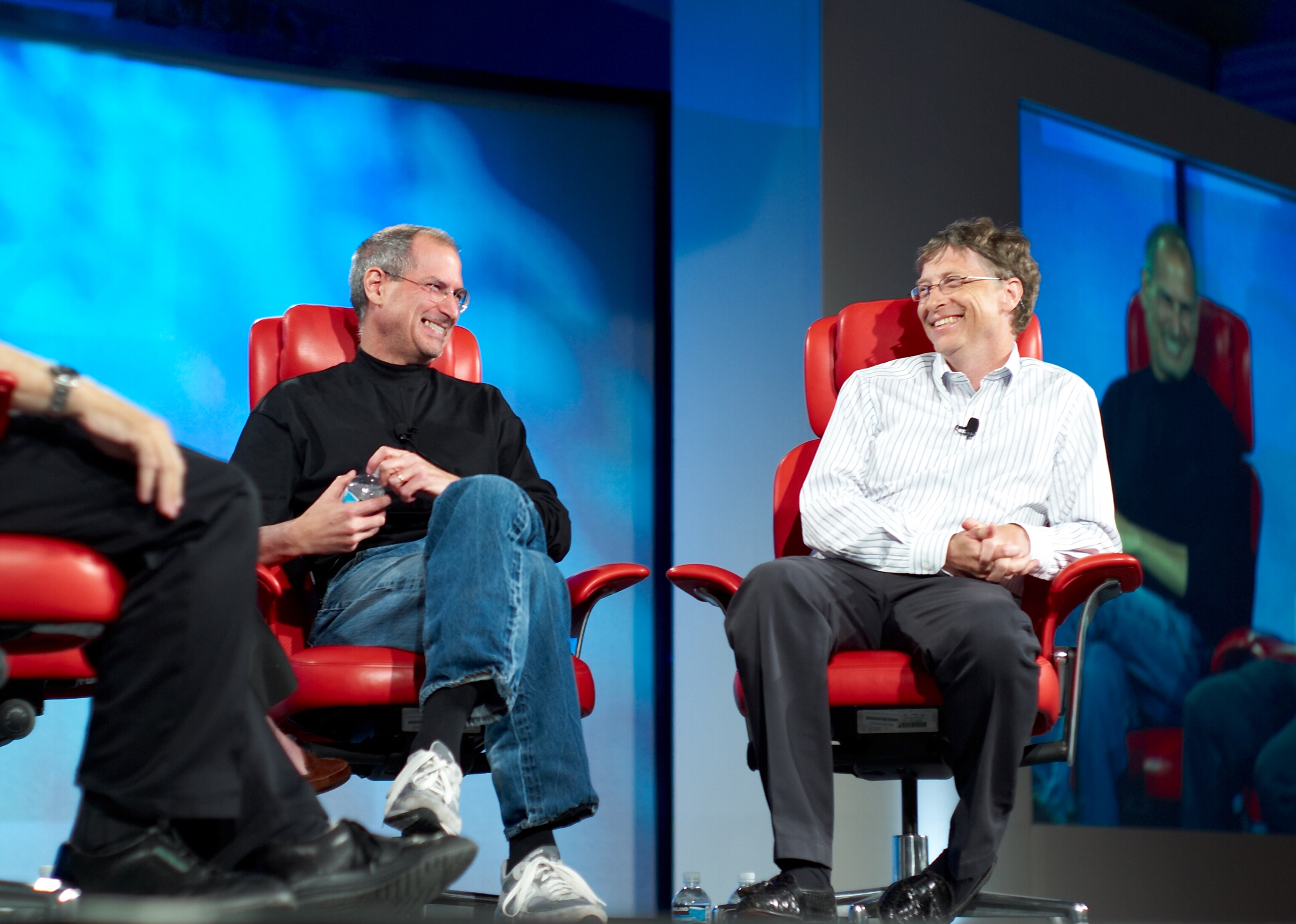What is the truth behind the myth of the entrepreneur?
A much more complex and less glamorous truth lies behind the storytelling of the visionary entrepreneur, the insider who has the revolutionary idea of the century. Thomas Houy, Researcher at Télécom ParisTech, breaks down the stereotypes surrounding the false image of the exceptional strategist. Following his presentation during the IMT symposium on businesses, the economy and society in November 2016, he returns to the subject of the truth of an entrepreneur who is above all closely attentive to demand and market data.
Even after his death, Steve Jobs embodies the figure of the entrepreneur. Often presented — or represented — as an innovative genius, he symbolizes the power of visionary man, the fortuitous person able to provide the solutions to the problems of a world that only he can understand. Far from being unique to the former CEO of Apple, this rose-tinted perspective seems to concern all successful entrepreneurs, who supposedly build long-term strategies on ideas that are just as sudden as they are disruptive. The only problem with this belief is that it is wrong.
Thomas Houy, Researcher and Head of the Student Entrepreneurship in a Digital World Chair at Télécom ParisTech, studies the characteristics of contemporary entrepreneurship, which is a driver of digital transition. He believes that multiple clichés need to be broken down, and first and foremost, the one which consists in believing that it is question of being visionary, that a person almost needs to have the gift of ubiquity to be a successful entrepreneur. While he does not consider that success comes down to chance, he simply points out that “entrepreneurship is almost completely obscure. Nobody can really predict its success. In the face of so many uncertainties, the most practical solution is to iterate as much as possible with the market.”
This ability to iterate has improved thanks to digital technology. 3D printing, for example, allows a product to be prototyped very quickly and tested among users, before returning just as quickly to the prototype phase if the solution is not suitable. Even better, data collected from users of online services provides a gage of the success or failure of a platform. In short, “it is now much easier to test a market and understand users” Thomas Houy observes.
It is more this capacity for rapid transfer between consumers and enterprises that explains success — which is built on the basis of repeated failures — rather than a long-term strategy or plan. This is one of the advantages of start-ups over big groups in digital technology. “Big businesses function with business plans and projections over several years; they are less able to let themselves be guided by a sort of serendipity, in which the organization accepts the fact it does not know where it will end up” the Researcher explains. Start-ups, on the other hand, are able do this thanks to their short history and close relationship with their first clients.

In May 2015, Bloomberg illustrated an article about Elon Musk and his SpaceX business using this visual from The Red Dress. A symbol of the mythologization of an entrepreneur raised to a position of pioneer in the conquest of Mars. Credits: Bloomberg / The Red Dress.
“Start-ups focus their efforts on finding what is known as the “product market fit”, which is the stage where the developed solution meets the demand of the market. Start-ups can even use tricks such as building false products to test the market’s liking for their solution,” Thomas Houy explains. He uses the example of Dropbox to illustrate this point. This start-up, which offers a system of storing and sharing files via the cloud, found its users before it even had a marketable product. “The founder of Dropbox created a false video over the space of a weekend to present his product, without mentioning that it didn’t exist yet,” the Researcher told us, “he was immediately inundated with emails. He had found his market without even having a product.”
This fast roll-out of solutions in the new digital economy makes business plans obsolete. The acceleration of the rate of digital transformation also prevents any form of prediction over the medium or long term. When Tinder entered the dating applications market, all the existing actors were wiped off the board within the space of a few months, nullifying any 5-year projections. “Business models have replaced business plans in the digital economy today,” Thomas Houy adds, “because nobody can predict what will happen in 6 months’ time.”
Being the first is not enough to be successful
Innovations can break through quickly, but this is no reason to believe that an innovation is an idea that strikes like lightening in the mind of an exceptional being. In fact “all ideas already exist” the Researcher believes, “if an idea doesn’t already exist, it’s probably because it’s a bad one. This is also what investors say” he continues. Twitter was in no way the first micro-blogging website. It even arrived ten years after the concept was first invented. Having the idea first is not a sign of success. What counts is the quality of execution. Twitter’s strength lies in the fact it pays constant attention to the user’s perception and adapts to its uses.
Does that mean a good entrepreneur is a good copier, able to take inspiration from others’ successes to develop a better solution? “People who copy successes often copy the wrong things” Thomas Houy warns. The creator of a social media may be tempted to copy Facebook, and will try to isolate what characterizes Facebook, such as its agile methodology based on frequent updates. “The problem is that among all the people who have used agile methodologies, thousands have got it wrong, so it’s not that which is behind the success of Facebook.” the Researcher explained. “Good entrepreneurs take inspiration from others’ mistakes just as much as their successes,” he added
It is partly this need to take a step back that means that good businesses in a given field are not necessarily set up by those already in the inner circles. “Statistically speaking, entrepreneurs with a knowledge of the field are more successful, but this is not the case among disruptive enterprises” the Researcher observed. This paradox is due to the fact that once the mentality of a sector or market has been adopted, it is difficult to break away and change perspective. He illustrated this fact with an example he is very familiar with: teaching. “When teaching staff create MOOCs, they generally do so from an academic point of view,” he explained, “but we are much less efficient at keeping the attention of the audience behind their screen than someone from the audio-visual or media sectors and who is familiar with attention economics.”
The reality of entrepreneurship is in fact often a long way off the widespread vision of it. The storytelling used with regards to this concept does not help paint an accurate portrait of an entrepreneur. Unfortunately, “it is a lot simpler and more attractive to describe how an entrepreneur has the gift of ubiquity, rather than to say that they are a humble person who does not forecast on the strength of their ideas but who constantly observes data for guidance,” comments Thomas Houy.
[box type=”shadow” align=”” class=”” width=””]
Transmitting good entrepreneurial practices to students
One of the common beliefs about the qualities of an effective entrepreneur is that you have to scale-up an innovation quickly. Thomas Houy is regularly confronted with this erroneous idea in the projects he leads with his students through the Student Entrepreneurship in a Digital World Chair, financed by LVMH. “My students often want to solve the problem of boredom in public transport,” he explained, “several times, they have come up with the idea of an ephemeral social network allowing travelers to contact each other on the bus or metro. They all have the same thought: ‘it’s a really good idea because 10 million people use the metro every year in France.’ Except that there’s no such thing as ‘the people on the metro’, and there are just as many different needs as there are individuals. In the morning, there may be a student on the metro going home from a night out, next to an executive practicing his project presentation in his head. Trying to scale-up quickly means trying to satisfy everybody, and trying to satisfy everybody means satisfying nobody. Good entrepreneurs target niches, they learn to perfectly satisfy their niche and only scale-up by addressing new categories one at a time.”[/box]





Leave a Reply
Want to join the discussion?Feel free to contribute!